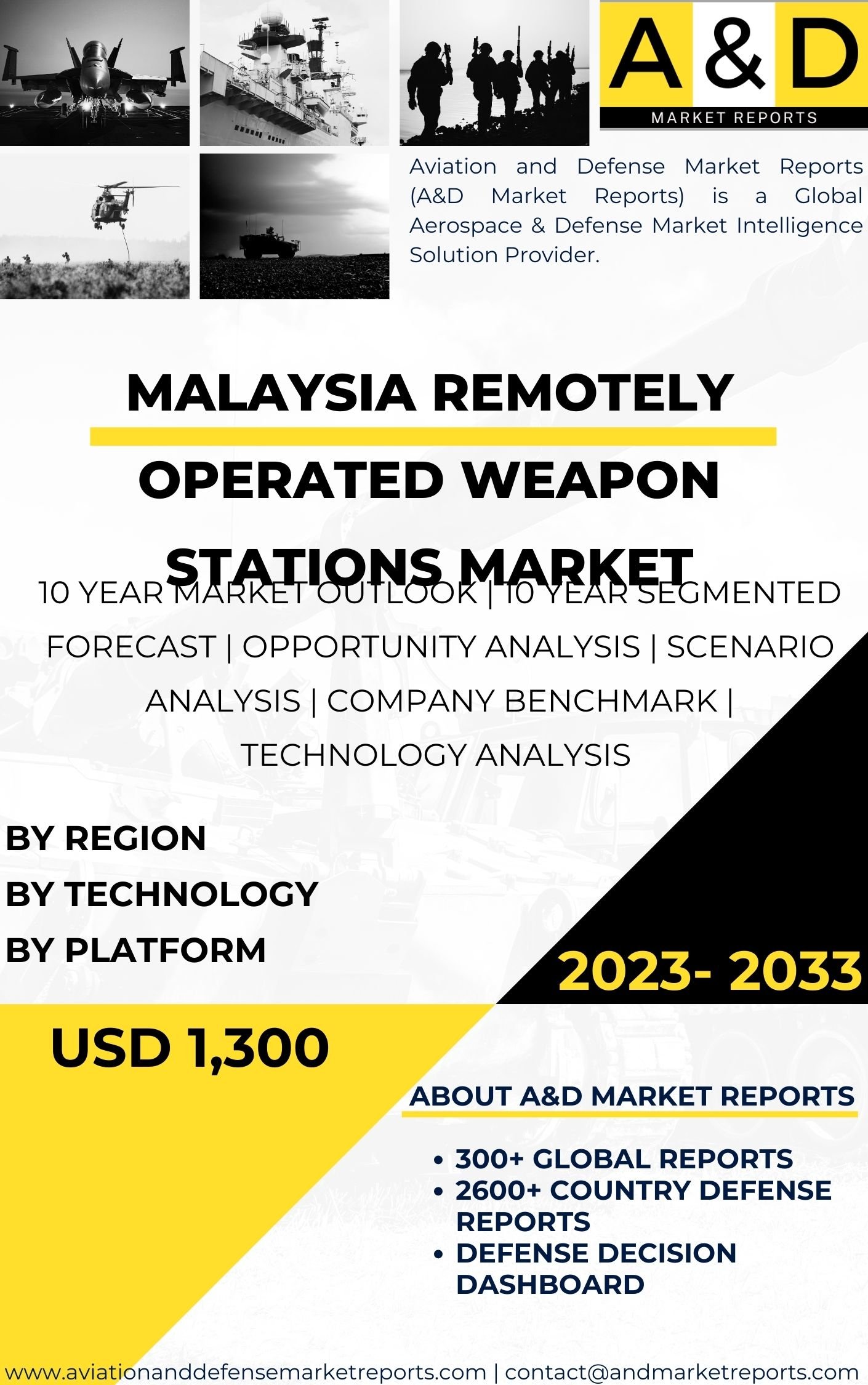Description
The Remotely Operated Weapon Stations (ROWS) market in Malaysia has been experiencing significant growth and development in recent years, reflecting the country’s commitment to enhancing its defense capabilities and modernizing its military systems. Remotely Operated Weapon Stations play a crucial role in modern warfare, providing the Malaysian Armed Forces with enhanced firepower, increased situational awareness, and improved operational flexibility.
As a nation with strategic geopolitical importance in Southeast Asia, Malaysia faces diverse security challenges, including potential threats from hostile forces, terrorism, piracy, and regional instability. The integration of advanced Remotely Operated Weapon Stations into its defense strategy enables Malaysia to establish a robust and modern defense posture.
The adoption of Remotely Operated Weapon Stations offers several significant advantages. These advanced weapon systems are remotely controlled from a protected location, reducing the risk to personnel and enhancing operational safety. This capability allows the Malaysian Armed Forces to engage targets with precision and lethality while minimizing the exposure of troops to hostile fire.
Moreover, Remotely Operated Weapon Stations improve situational awareness on the battlefield. Equipped with advanced sensors, cameras, and targeting systems, these weapon stations provide real-time data and visuals to operators, enabling them to make well-informed decisions and accurately engage targets.
Additionally, Remotely Operated Weapon Stations are modular and adaptable to different platforms, including armored vehicles, naval vessels, and static positions. This versatility allows the Malaysian Armed Forces to equip various platforms with firepower, enabling them to conduct a wide range of missions, from convoy protection and border security to maritime patrol and coastal defense.
Furthermore, Remotely Operated Weapon Stations enhance the overall firepower of military assets. These systems can be armed with various weapon types, including machine guns, automatic cannons, and anti-tank guided missiles, significantly increasing the lethality of platforms they are mounted on.
The Malaysian government has recognized the importance of international collaborations in acquiring and developing Remotely Operated Weapon Station technologies. Partnerships with leading global defense companies and weapon station manufacturers have facilitated access to cutting-edge ROWS systems and expertise. These collaborations have enabled technology transfer and capacity building, contributing to the growth of Malaysia’s domestic ROWS capabilities.
Furthermore, Malaysia has been actively investing in local research and development (R&D) initiatives to foster indigenous Remotely Operated Weapon Station technologies. By encouraging homegrown innovation, Malaysia aims to achieve self-reliance in ROWS development and strengthen its defense industrial base.
While the Remotely Operated Weapon Stations market in Malaysia shows promise, it is not without challenges. One of the primary hurdles is the high cost of developing and acquiring advanced weapon stations. These sophisticated systems require significant investment in research, development, and testing. Budget constraints may impact the pace and scale of ROWS acquisition and modernization efforts.
Moreover, the successful integration of Remotely Operated Weapon Stations into the Malaysian Armed Forces requires specialized training and expertise. Personnel must be proficient in operating and employing these advanced weapon systems effectively. The Malaysian Armed Forces must invest in continuous training and education to ensure their operators possess the necessary skills to maximize the benefits of Remotely Operated Weapon Stations.
Additionally, ROWS development requires access to advanced materials, manufacturing processes, and technologies. Addressing these technological challenges is essential to enhancing Malaysia’s indigenous ROWS capabilities.
Looking ahead, the Remotely Operated Weapon Stations market in Malaysia is poised for further growth. The government’s commitment to modernizing its defense capabilities and adopting advanced technologies will drive continued investments in ROWS systems. As Remotely Operated Weapon Station technologies continue to evolve and demonstrate their effectiveness, they are likely to play an increasingly pivotal role in Malaysia’s defense and security strategy.
Moreover, Malaysia’s participation in regional security collaborations and joint military exercises will likely influence its ROWS requirements. As the country seeks to strengthen its position as a key player in regional security and defense cooperation, the demand for advanced Remotely Operated Weapon Stations with interoperability and compatibility with allied forces will increase.
In conclusion, the Remotely Operated Weapon Stations market in Malaysia has experienced significant growth and progress. The government’s focus on enhancing its defense capabilities and investing in advanced ROWS technologies has paved the way for the integration of modern weapon systems into its military strategy. International collaborations and domestic research efforts have positioned Malaysia as a participant in the global Remotely Operated Weapon Station landscape.
However, challenges related to budget constraints, technology development, training, and engineering expertise must be addressed proactively to sustain and enhance the growth of the ROWS market in the years to come. By maintaining a modern and capable ROWS capability, Malaysia can effectively enhance its defense posture, deter potential threats, and bolster its overall military preparedness.




